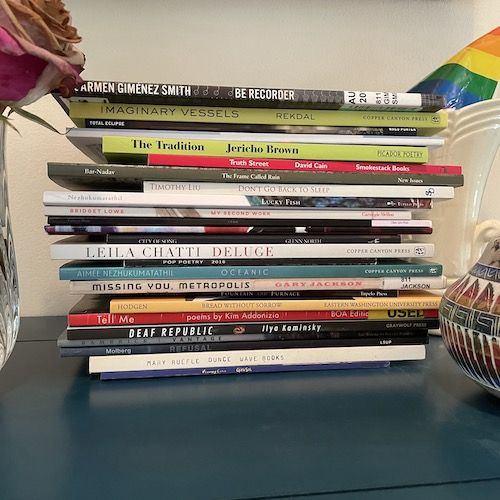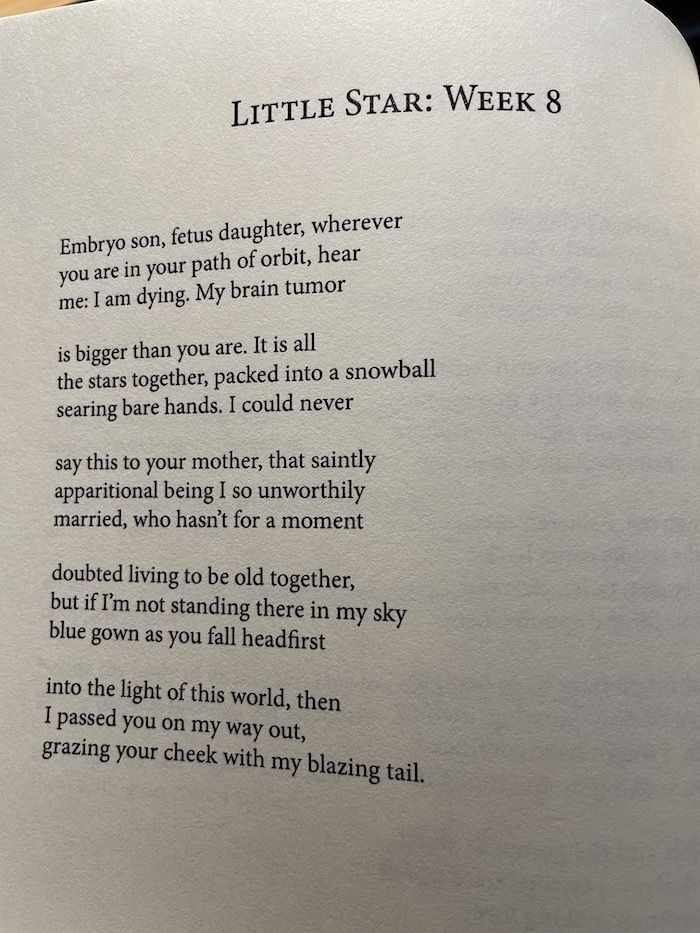
What I Learned From The Sealey Challenge
Even though it began in 2017, this year was the first I’d heard of The Sealey Challenge. Named after poet Nicole Sealey, it challenges participants to read a book of poetry each day of August. Through social media, the entire community of poets and readers are connected through #TheSealeyChallenge.
I became a poet and poetry reader during my time in undergrad (in my 30s) and continued through my MFA program and today. I’ve published some poems and want to publish my own books. Since finishing my MFA, however, I’ve struggled to write poetry with any regularity. When I read about The Sealey Challenge, it seemed like a great way to kickstart my poetic brain, post to Instagram more, and generally dig into my poetry TBR pile.

So what did I learn from The Sealey Challenge?
This is Not How I Like to Read Poetry
I know that sounds rather harsh, but hear me out. I read poetry slowly. Very slowly. And multiple times. Since I know that every syllable, every piece of punctuation, and every line break is a CHOICE, I try to give every bit its due. I like to read each poem out loud at least once, getting a feel for it in my mouth and letting the sounds resonate. This is especially true of poets that really like to play with assonance and dissonance.
The Sealey Challenge forced me to read rather quickly. Even though the books were all small (I’m not going to read the collected poems of Pablo Neruda in a day), there was just no way to read a chapbook or collection in a day at the pace I prefer to read poetry. That said, I definitely dropped some Post-It flags on poems I want to revisit and dissect.
How to be Better at Instagram
Sort of. The poetry community on Instagram has been awesome throughout this whole challenge. A friend of mine who is a social media expert maybe also helped me a little. A lot. Okay, this was mostly her, but #TheSealeyChallenge has been a fun way to use what I’ve learned.
I Prefer Poetry Books With a Cohesive Theme
Maybe it’s my background as a fiction writer that makes me this way. Hard to say, but I found that if a chapbook or collection is working on a single theme or narrative, it pulls me in and along much better. Lots of poets I really admire will publish a book every few years of all the poetry they’ve written since their last collection.
Mary Ruefle’s Dunce was an absolute joy, though with little connective tissue. Kim Addonizio’s Tell Me carried all of her trademark brutal honesty, though it held no narrative. This isn’t to say that there aren’t a few themes since poets tend to go through thematic phases as they write, but I really like big, overarching themes and narratives. This is purely a personal preference, mind you.
Deaf Republic by Ilya Kaminsky floored me with the narrative of a fictional town that falls deaf after the shooting of a deaf boy. Leila Chatti’s struggle with her medical issues in Deluge reminded me of my own intersex medical struggles. The intersection of Cameron Morse’s* cancer diagnosis and pending fatherhood in Fall Risk was like gravity to me.

Reading Doesn’t Equate to Writing
Have I written a single poem in the month of August? No. Maybe it’s because I’ve added a poetry book each day to normal adult responsibilities. Maybe I’m still just making excuses.
Have I jotted down a number of new poem ideas as a result of The Sealey Challenge? Absolutely. We shall see what September brings.
31 Books Can Be Too Much
I fell behind in The Sealey Challenge. What can I say other than, “adulthood is hard sometimes?” I have a full-time job. A wife, three cats, a new-to-me house that has needed some work. I’m also trying to write another novel and this little Book Riot side-hustle. I don’t even have human children, but it can still be a lot.
I subscribe to writing and reading daily. I also subscribe to giving ourselves a break, not being too hard on ourselves. For five or six days around mid-August, I found myself too tired for verses and stanzas. My wife and I took a little staycation, which helped reenergize me and got me back on track. I doubled up on poetry books a couple of days, but then just acknowledged that I would not be reading 31 books in 31 days.
And that’s okay.
I kept on with the challenge. I finished four books behind, but was still reading a book each day for most of the month. I wasn’t worried about catching up. I was reading and writing marginalia, planting little Post-It flags, and posting to social media. The challenge had its intended effects on me, even if I didn’t end up hitting that magical number.
Overall, The Sealey Challenge was a fun and, appropriately, challenging experience. I made a dent in my poetry shelf, remembered why I adore certain poets, and discovered some new voices on my shelf. Five stars. Would read again.
*Full disclosure: Cameron Morse is a friend, has outlived all prognoses of his cancer by years, and now has a second child.













